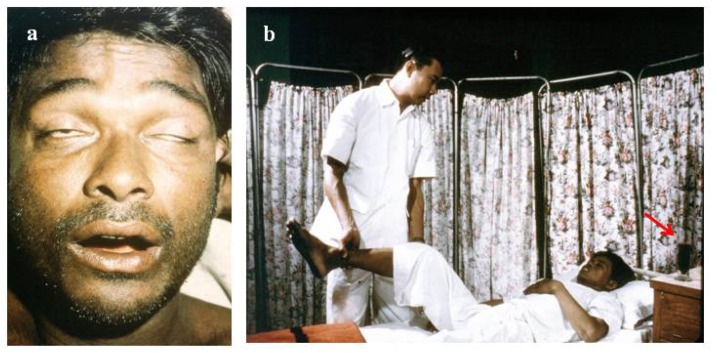Figure 3.
(a) Ptosis and inability to extrude the tongue (neurotoxic signs) in a victim of elapid bite (courtesy, DA Warrell); (b) Rhabdomyolysis (muscle damage) following a bite by a sea snake. This movement of the leg is extremely painful. Note the presence of myoglobin in the sample of urine by the bedside (arrow) (courtesy HA Reid).

